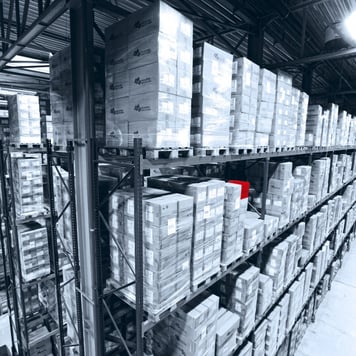 It’s every industrial manufacturer’s worst nightmare. You invest time, money, and energy into designing and producing your perfect product. Your engineers go over every detail to make sure the product meets your high quality standards. Your production team builds exactly to the specifications, creating a flawless final product.
It’s every industrial manufacturer’s worst nightmare. You invest time, money, and energy into designing and producing your perfect product. Your engineers go over every detail to make sure the product meets your high quality standards. Your production team builds exactly to the specifications, creating a flawless final product.
Then your product ships to your customer and you get the call. The product arrived damaged. It’s not useable and has to be returned. You have two bad options in front of you. You can write off the sale and refund the money, or you can get your team to turn around a new product quickly and get it out to the customer. Either way, you’re losing money.
If you’re using wood crating to package your industrial product, you may be risking this scenario every time you send out a shipment. And that’s not all. You also could be dealing with inflated shipping and transportation costs.
At Deufol, we do use wood crating when it’s appropriate, but we also offer a number of other industrial packaging materials, such as stainless steel, paperboard, fiberboard, and even plastic. We take a look at each project based on its unique goals and needs and then determine which material is the best option.
Below are a couple of possible risks that can come from wood crating. If you’re using wood crates to package your industrial products, you may want to consider other options. There could be an alternative that is more cost-efficient and provides more protection for your product.
Product stability
Many packaging companies that offer wood crating use a one-size-fits-all mentality. They may construct only a few different sizes of wooden crating. If your product doesn’t fit that crate size exactly, they’ll fill in the extra space with interior packaging, like loose fill, paper, or foam.
The problem is that even with that interior packaging, your product could still be exposed to damage. All it takes is a tiny bit of unoccupied space and slight movement for your product to shift and ultimately collide with the side of the crate.
If wood crating is the best option for you, it should be a crate that is custom built specifically for your product. That’s the best way to ensure that there is little risk of movement or collision during transport.
Cost
Wooden crating can often add unnecessary cost to your packaging process. Wood is heavier than many other packaging materials. Your crates could increase the weight of your containers, adding freight cost to each shipment.
Also, building wooden crates can be time consuming. They often have to be constructed by hand, substantially inflating per-unit packaging costs. It’s possible that you could use other materials and implement an automated or even semi-automated packaging solution. That could drive down your packaging costs and help you boost your per-unit margin.
 Again, packaging companies that specialize only in wood crating may not have the capability to review your entire process and recommend another solution. At Deufol, we consider material not just from a product stability perspective, but also from an efficiency and cost standpoint. If another material will help maximize efficiency and drive down cost, we won’t hesitate to recommend that solution.
Again, packaging companies that specialize only in wood crating may not have the capability to review your entire process and recommend another solution. At Deufol, we consider material not just from a product stability perspective, but also from an efficiency and cost standpoint. If another material will help maximize efficiency and drive down cost, we won’t hesitate to recommend that solution.
It may very well be that wood crating is the best solution for your industrial product. However, the only way to know is to work with a packaging partner who custom builds packaging and who uses a wide range of materials. That packaging partner can evaluate your product, talk to your engineers, and design a process that maximizes stability and efficiency.
Don’t assume that wood crating is your only industrial packaging option. Consider alternatives and analyze your process to find the best solution for your product.





Let Us Know What You Thought about this Post.
Put your Comment Below.